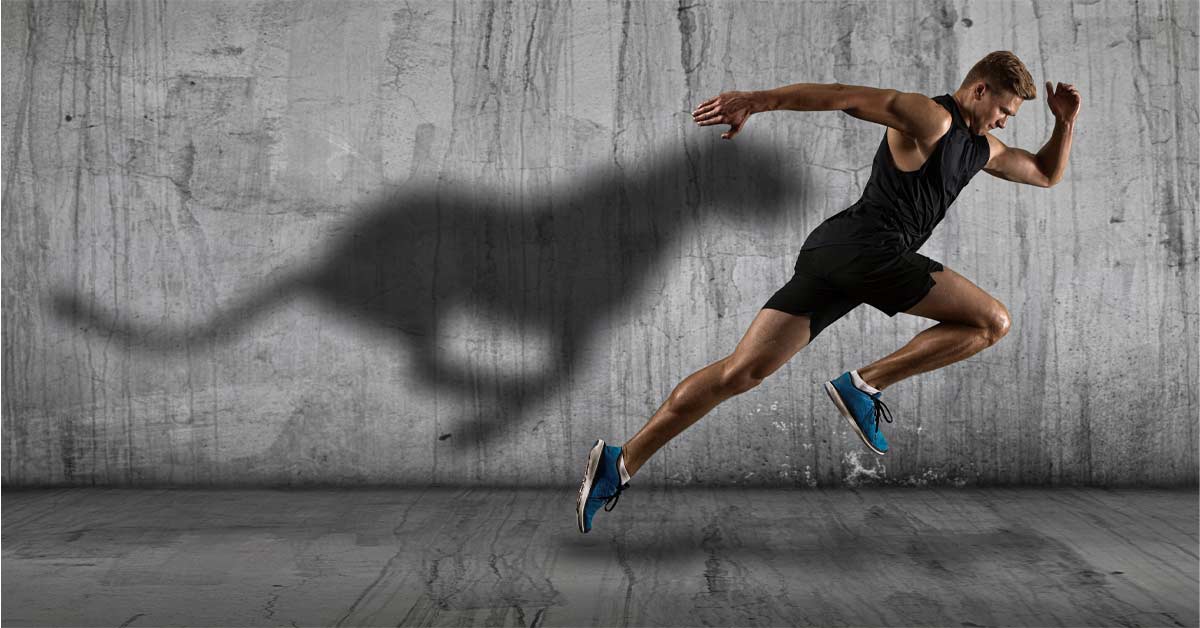
The Equation for Improving Sprint Speed
Many athletes enter the gym with the goal of getting faster. As strength and conditioning coaches, how can we make sure that happens? There are two variables that we can manipulate to help an athlete get faster. Speed is a simple function of the distance an individual covers with each step (stride length) and how quickly those steps happen (stride frequency) (1). If you improve either variable, your speed will increase. Stride length is often increased through developing power through the legs.

Power development is a common theme in strength and conditioning. But what even is power? In simple terms, power is the ability to generate large amounts of force in a short period of time. 
Imagine punching a punching bag in slow motion. Even if you intend to hit the bag as hard as you can, it won’t be a very hard hit. Now, imagine punching a punching bag with full speed and full strength. You will hit the bag far harder than the first hit. This is just like sprinting! The harder and more quickly you press the ground away, the farther you will go with each step.

As strength and conditioning coaches, we love talking about power development because it has so many implications for sport. While it allows athletes to run faster, it also allows them to jump higher, throw farther, and change direction more quickly. Check out this past blog with exercises to help athletes improve their power.
While stride length (and power) is the most commonly manipulated variable in improving speed, there is another variable in the equation that we often ignore: stride frequency. While pushing power into the ground allows an athlete to “rebound” into their next step more quickly, as strength and conditioning coaches, we have other ways to improve stride frequency. Below are some exercises we use to improve stride frequency, and therefore speed in athletes.
KB Hip Flexor Isometric Hold
The hip flexors are responsible for the knee drive that occurs in sprinting. As the sequence goes, the quicker the knee can get up, the quicker the knee can drive into the ground for another stride. This exercise emphasizes strength in the hip flexors. Since power is basically strength with speed, an athlete needs a base level of strength before applying more speed and power to their movements.
Position yourself next to a wall, rack, or other stable surface. Stand on one leg with a kettlebell handle looped over the toes of your other foot. Bend the knee and flex the hip to bring yourself into a single leg stance with one knee at hip height. Begin by holding this position for 10 seconds each side, then progress to 20 seconds as you get stronger.
Hip Flexor Resistance Band Drives
After a base level of strength has been developed in the hip flexors, we begin to train them in a more powerful movement pattern. While this drill requires a similar body position, it emphasizes the quickness and explosiveness of the knee drive in a repeated fashion, which closely replicates the sprinting pattern.
Anchor a resistance band behind you and loop one ankle through the band. Drive this knee up to hip height and then back to the ground using quick and precise movements. The arms should be pumping in an “opposite-arm-opposite-leg” fashion, as if you were actually sprinting. Repeat this 10 times before repeating on the other side. As you get stronger, progress to 20 times on each leg.
Ankling
Now that we’ve established strength and power in the muscles responsible for quick leg cycling, we need to practice cycling the legs more quickly. Ankling is a great drill to improve ground contact time and develop the mind-muscle connection to get through the entire sprint cycle quicker.
Begin in a tall stance with the torso stacked directly over the hips, knee, and ankles. Instead of sprinting with the usual leg cycle of driving the knees high, emphasize making the smallest, quickest cycles with your feet. Your feet should only lift to mid-shin height at the top of their cycle before exploding back into the ground. The emphasis should be on quick and powerful touches into the ground, while also moving the arms in an “opposite-arm-opposite-leg” pattern.
As with most types of training, speed development is not a “one size fits all” approach. Every athlete has a different base and needs a personalized program to take them from where they are to where they want to be. If you want to improve your speed, give us a call at (401) 467-6701 or send us an email at info@olympiafitnessri.com.
- Haff, Greg,, and N. Travis Triplett. Essentials of Strength Training and Conditioning. Fourth edition. Champaign, IL: Human Kinetics, 2016. Print.
Katie Usher is a new addition to the strength and conditioning team at Olympia Fitness and Performance. She recently graduated from the University of Rhode Island with degrees in Kinesiology and Psychology. While interning at Olympia, she found a love for helping athletes and general fitness clients push themselves to new levels in the gym, on the field, and in life. She is excited to continue setting clients on a path that allows them reach their goals.

